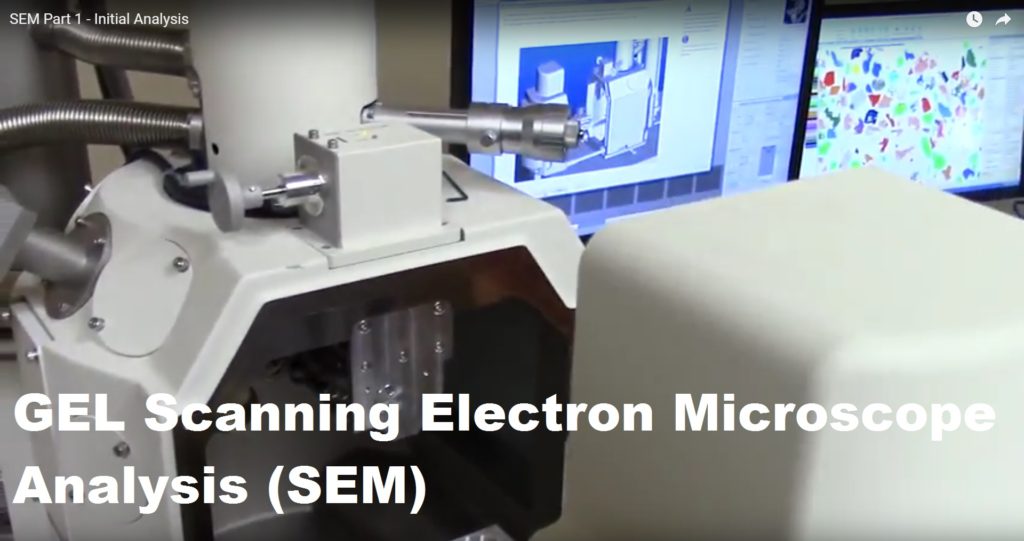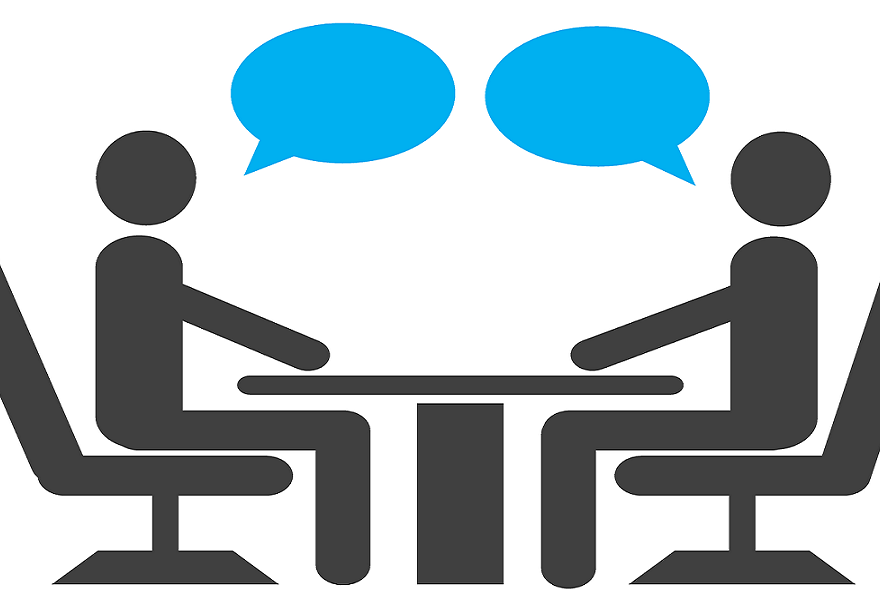
Here is an interview that I recently had with Dr. Paul Miranda, who provides our scanning electron microscope (SEM) analysis:
Brandon: Okay, so Dr. Miranda, what is a Scanning Electron Microscope?
Doctor Paul Miranda: A Scanning Electron Microscope is something you can use to analyze anything you want, but what I like to use it is for analyzing minerals. So, if you think a visual microscope, you can only get down to a hundred fifty magnification. But, using a Scanning Electron Microscope after you’ve prepped the sample that means putting in epoxy, polishing, carbon coating, you can actually make it down to like a hundred thousand magnification which is really small. I tend to go to maybe five hundred the most, so what I can do on a Scanning Electron Microscope, you can look at particles about one micron. You can go less if you want but once you get below one Micron you don’t worry about it too much. So it’s a piece of equipment to look for really small particles. And, the particles are based on grayscale and x-rays.
Brandon: Does the equipment that’s used for analysis matter? Are there some equipment that is more robust or better to analyse with and what do you have? What do you use?
Doctor: I actually have a Hitachi and I’ve also been on a Joule. And, also have used a Joule, and it seems to work pretty well. The microscope itself is built very well, it’s when you have the software to analyze the minerals. It also helps being able to know what minerals we’re looking at, what minerals interest you.
Brandon: And your software you have is remarkable robust in cutting edge with its libraries and gives you tools to really tell anyone what’s in their sample.
Doctor: Absolutely, yes. There are couple different technologies out there called MLA and QEMSCAN. A guy named, Dr. Yingu, he developed MLA and he started on the QEMSCAN. What he has done is he has taken the best part of all technologies and put it together. It’s called the AMICS system and it works very well. He has been doing this for the last 15 to 20 years of his life, and he understands the software very well, extremely well.
Brandon: If I was to send you a sample of something, a deposit that I was exploring, send you a few samples, can you go from just a sample in a bag all the way to tell me whether or not this deposit is worth pursuing economically?
Doctor: Yes, absolutely. If you’re gonna send me a sample, make sure it’s a representative sample. I’ve had samples that are high grade and they could be economically viable but if you go out there just pick the best parts you could get some issues on that, but if the sample is representative, after analysis, I’ll be able to completely tell you whether it’s worth going after or not, if you tell me the tonnage you have available.
Brandon: So, what you can do is you can couple the power of the SEM analysis with your deep experience in metallurgy and mining in addition to the experience operating the SEM; talk about how you combine all those things to coming up with the report telling us whether or not it makes sense to move forward.
Doctor: So, what I do is you send me a sample and I analyse it. If we’re looking for a copper, I actually figure out what percent of copper you have on your ore sample, and then we just base on copper price whether feasible, provided you have enough tonnage of this representative sample that I have been given.
Brandon: Can you help someone to better refine their processing such as a mill and help them with their recovery?
Doctor: Yes, I’ve done that several times when I was the chief metallurgist at Thompson Creek we actually determined, using this piece of technology, they’re actually over grinding. We can coarsen up our grinds to recover more. Before, we were usually around 88%, but after we coarsen up the grind and find out they are over grinding we determined that they’re losing some of their product into slimes. Recovery went to 92% to 95% the rest of the time.
Brandon: Can folks send you single samples all the way up to a bunch of samples packaged together? Can you talk about what they need to send you?
Doctor: Yeah. You can send me one sample or hundred samples at one time. A hundred samples will take a lot longer but generally if I get groups of 20 samples which I’m used to getting, but if you send me one sample feel free to send it to me in the meantime when I can do the analysis for it. Part of the package is you get all that for what I charge is, I just need only the prep time also the analysis but I also I write the report that everybody can understand and go from there.
Brandon: How much sample do you need?
Doctor: Generally, 10 grams is enough but I can probably get away with 2. I’d like to have 10 grams just to make sure in case something happen so I can make duplicates. But, if you’re looking for a gold or silver it probably for 30 grams a little better cause I have to make multiple [sample] pucks in order to find those minerals.
If you would like to hire us for this service, go here.
Check out our other social media pages!

